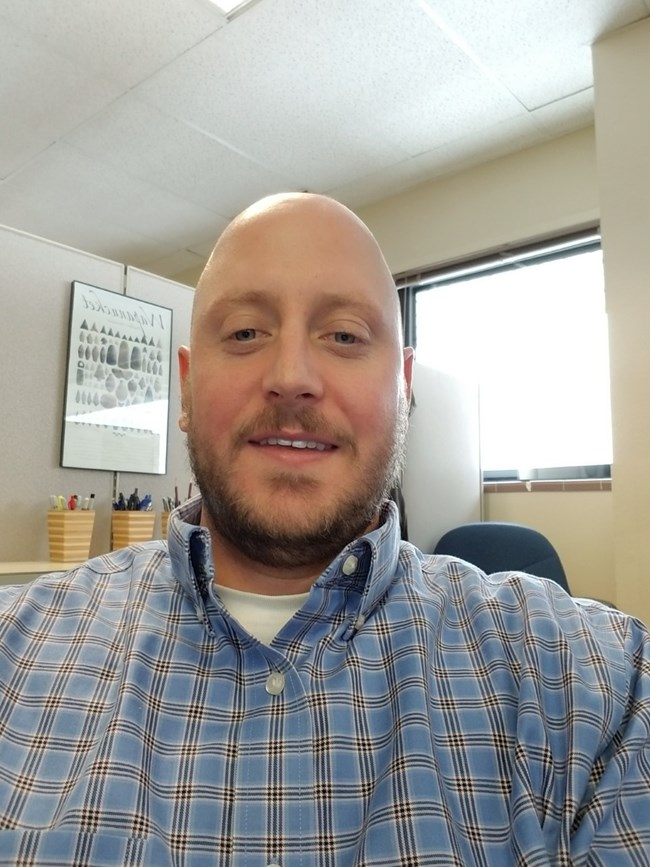Last updated: February 10, 2021
Article
Joseph Carruth Helps Make National Park Service A Safer Place As Fire Protection Engineer

What's your name and job title?
Joseph C. Carruth, Fire Protection Engineer at the Denver Service Center (DSC).
Does curiosity and wonder play a role in being an engineer? If so, how does it impact you and your work?
Curiosity and wonder absolutely play a role in being an engineer. In my life outside of work I find myself asking how and why about things work the way they do. While at amusement parks, I find myself inspecting how rides are constructed. I have discussions with my daughters as to why things are behaving a certain way. It is just something that never gets shut off. In my work as a Fire Protection Engineer, I find myself reviewing plans and investigating everything about a building or location. Looking at ariel photos and Google photos of a park really helps provide context to a building and why it exists. That research leads to asking questions about what is “behind” the building that might impact the use of the building. Being curious leads to researching and gaining information about a building that may not seem relevant to a current project but almost always provides better understanding of the need for a project.
What is one of your favorite facets about being an engineer? Or what might surprise people about being an engineer?
Stereotypically engineers are thought to be anti-social or not good with people. I am reminded of the scene in the movie “Office Space.” The character, Tom Smykowski, is being interviewed by “the Bobs” and implies that engineers don’t have people skills. Though this scene is hilarious, I don’t see this stereotype holding true for me. As an engineer, I thrive on my interactions with people. I love explaining a technical requirement in an easy to understand way. It is amazing to have a brain storming session with another engineer. I enjoy having social conversations with people. I have found that it is people that make the technical aspects of engineering enjoyable. Without people or a human connection, engineering has no meaning or purpose, especially in Fire Protection Engineering.
What is one of your favorite park projects that you've worked on and why?
My favorite park project has been the Old Courthouse Renovation at Gateway Arch in St. Louis, MO. This project involved a lot of fire protection engineering from replacing an old wireless fire alarm system, to fire sprinkler addition to the rotunda, to smoke modeling. A project of this nature has huge impacts on the historic fabric of the building, so evaluation of the necessity of fire protection systems has been essential. During this project, we heavily evaluated the need for a smoke evacuation in the rotunda. There were numerous discussions, calculations, and evaluations to determine if smoke evacuation was required, necessary, and desired. This all required interactions with many engineers, not just fire protection engineers, with different perspectives and goals. It was just fun and exciting to work through this and finally arrive at an acceptable solution. To wrap this design up, we did our one-hundred percent construction document review on site at the Old Courthouse. It was just amazing to physically be in the building and see what it looked like, to see the history in the building and its importance.
Tell us about a unique or special technology or practice that you've had the opportunity to experience working with or using in your career? What problem did it solve?
When I was at General Services Administration, I developed a project to replace all the phone lines for the fire alarm systems at the Denver Federal Center (DFC) with a new solution. This was in anticipation that code was no longer going to permit the use of plain old telephone lines as an acceptable means to monitor fire alarm system status. There were several solutions, but for a campus like the DFC, a wireless radio system made the most sense. This solution had its challenges in getting different groups to view and think about fire alarm communication solutions differently. Ultimately, it was an amazing experience to work on a project that showed fire protection doesn’t have to continue using old technologies. This project showed not only can newer technologies be used in fire protection, but by using these solutions cost savings can be accomplished as well
If your older self gave your younger self advice, what would it be?
If I could give my younger self advice it would be three things.
- First, I would tell myself that Fire Protection Engineer was a discipline. I was unaware about fire protection being an engineering subject while I was studying civil engineering as an undergraduate. There just wasn’t a program at Colorado State University. In fact, there are only three accredited Fire Protection Engineering undergraduate programs in the country.
- Second, don’t get tunnel vision as to where your engineering career might, and can go. When in school, I knew I wanted to design and build bridges. I would have never guessed I would do anything different, but here I am.
- Third, take more writing classes. As an undergraduate, I would have never guessed how much writing I would have to do. From emails, to review comments, to reports and studies. I thought I was going to be doing more drafting and calculations. Wow, was I wrong, and now I wish I had stronger writing skills.
